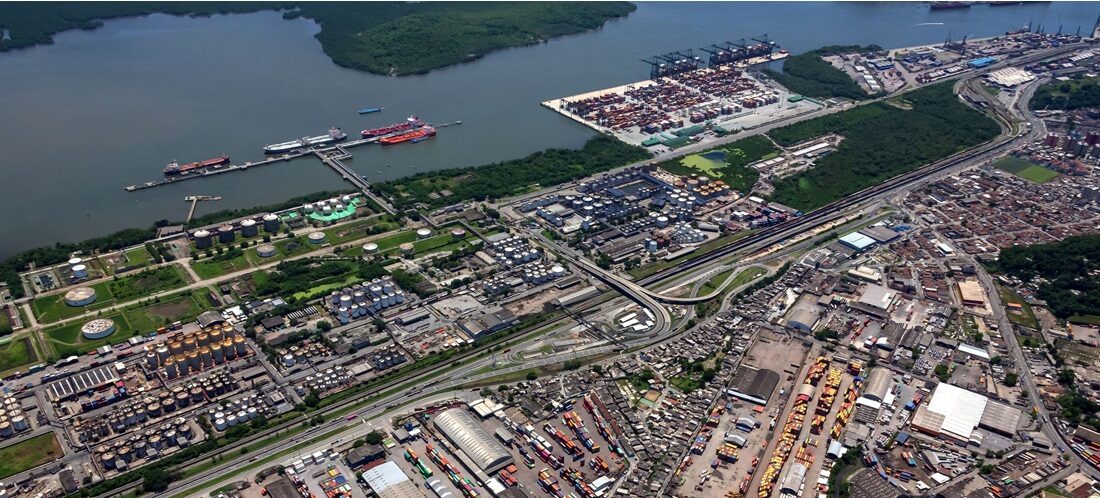
Terminal to invest BRL 565 million in the Port of Santos
May, 23, 2024 Posted by Gabriel MalheirosWeek 202421
CLI, the world’s largest sugar exporter, represented by its unit in the Port of Santos, has signed an amendment to its lease contract with the Ministry of Ports and Airports (MPor). This agreement, valid until 2036, includes a commitment to invest R$565 million in modernizing the terminal. The upgrades aim to boost the annual movement of sugar, corn, and soy from 15 million tonnes to 19 million tonnes by mid-2028.
In an exclusive interview with A Tribuna, CLI Sul director Luís Neves detailed the comprehensive renovation plans. These include constructing a warehouse to increase static capacity by 100,000 tons and creating a new park of hoppers with four unloading points for self-unloading trucks and bulk carriers.
“We will also build a new administrative headquarters, an electrical power substation, and acquire a ship loader, along with more efficient conveyor belts that reduce particulate dispersion by over 90%,” Neves said.
Operational Scope
The terminal, located on the Right Bank of the Santos port complex, features a complete logistics park. Activities span from transporting cargo from production centers to ship loading for export. China remains the primary destination for most of the shipped cargo. Sugar is produced in-state, from São Paulo, while grains—soybeans and corn—are transported from Mato Grosso and Goiás.
Cargo arrives at the terminal via trucks and bulk trains, with sugar transported equally by both modes, while 90% of grains arrive by rail. Upon arrival, a sample of the product is tested in a dedicated laboratory. If approved, the product is unloaded into road and rail hoppers, stored, and subsequently loaded onto ships. The terminal functions as a transshipment point, with cargo typically remaining there for five to six days.
“We handle 15 million tonnes per annum, with 9.5 million tonnes of sugar and 5.5 million tonnes of soybeans and corn. Our goal with these investments is to reach 19 million tonnes per year,” Neves stated.
The following chart shows Port of Santos’ sugar export volume measured in TEUs between Jan 2021 and Mar 2024. The data comes from DataLiner, a Datamar business intelligence product.
Sugar Exports from Santos Port | Jan 2021 – Mar 2024 | TEUs
Source: DataLiner (click here to request a demo)
Global Sugar Export Leader
According to CLI Sul’s disclosed work program, construction is set to begin this August with the administrative headquarters. Hopper installations are planned for 2025 and 2026 while shipping belt replacements are scheduled for 2027 and 2028. “Our expectation is to complete all works by 2028, though it could happen earlier,” Neves projected.
Foreign Trade Role
Neves highlighted CLI’s significant role in foreign trade. “We are the world’s largest sugar terminal, holding approximately 42% of the market share in Santos, which – in turn – controls 75% of Brazil’s market share. This means a third of all global sugar exports pass through our terminal,” he said.
Sustainability Initiatives
Part of the investment will go toward constructing a power substation to meet increased energy demands. Neves also revealed plans to adopt renewable energy at Santos, similar to their Itaqui terminal. “We aim to rely 100% on renewable energy sources by 2026,” he added.
The company will also replace one of its three shiploaders with a new, higher-capacity model to enhance loading speed and competitiveness. “This will make the Port of Santos the most efficient option for serving Midwest Brazil and São Paulo,” Neves concluded.
Currently, CLI’s most modern shiploader at the Port of Santos operates at a capacity of 3,000 tons per hour.
Source: A Tribuna
Click here to read the original news piece: https://www.atribuna.com.br/noticias/portomar/terminal-deve-investir-r-565-milhoes-no-cais-santista
-
Shipping
Nov, 09, 2023
0
Maersk expands operations in Brazil with new call in Rio de Janeiro
-
Grains
Feb, 02, 2022
0
Brazil’s exports of soybeans may reach 9.9 million tons in February
-
Ports and Terminals
May, 15, 2020
0
New equipment arrives at TECON Salvador
-
Shipping
Apr, 17, 2025
0
ONE Showcases Advancements in Services, Technology, and Sustainability at Intermodal

